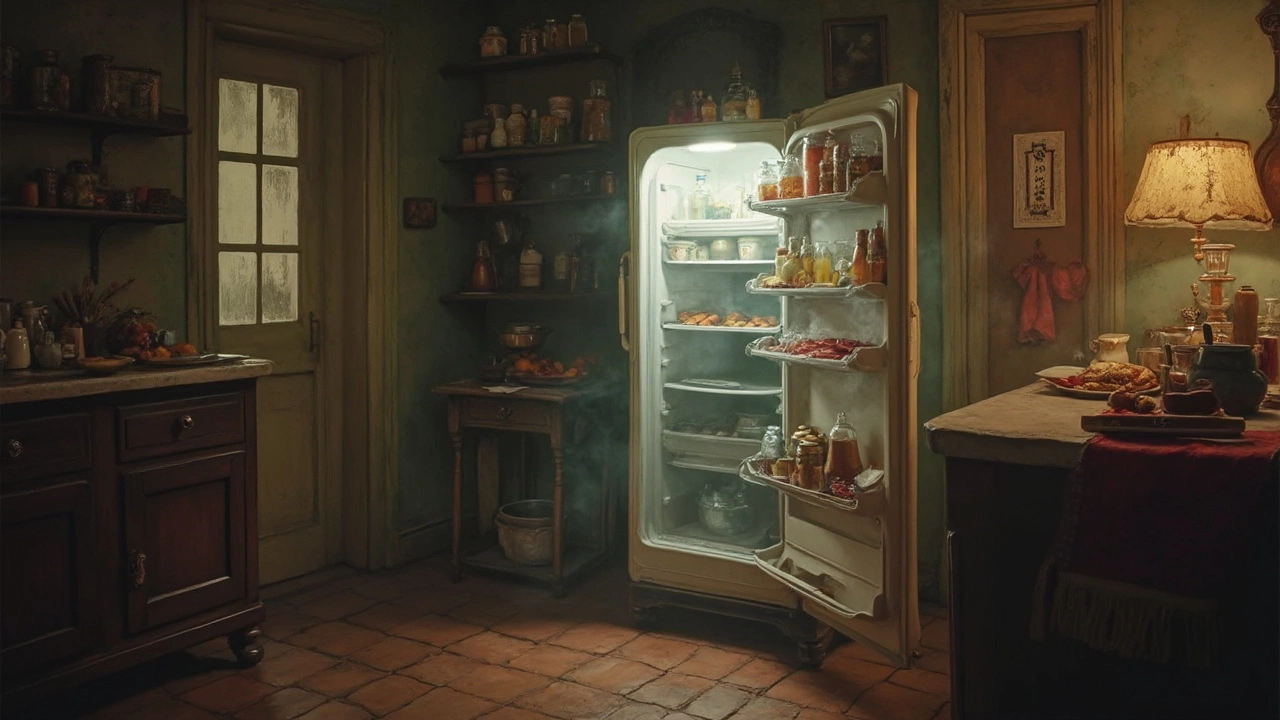Have you ever noticed something off about your fridge? Maybe it's making that weird buzzing sound again or your veggies are wilting faster than you can say 'salad night.' A funky fridge can be more than just a minor annoyance—it can be a ticking time bomb for spoiled food and wasted cash. So, let's cut straight to it and explore how to figure out if your trusty food keeper is on the fritz.
First things first, keep an ear out for unusual noises. If your refrigerator starts humming, buzzing, or clicking more than usual, there might be trouble brewing. While some sounds are normal as it cycles, a persistent racket can point to mechanical issues like a failing compressor or faulty fan.
Unusual Noises
Ever feel like your fridge is trying to communicate? Those unexpected noises could be its way of crying out for help. Typically, refrigerators operate with a gentle hum, but when things go haywire, they start to sound like an amateur rock band jamming in your kitchen.
A refrigerator that's producing unusual noise might be having issues with the compressor. This component is the heart of your cooling system, and it's crucial for maintaining consistent temperatures. If the compressor is on the fritz, it may produce loud humming or buzzing sounds. A faulty compressor isn't just annoying; over time, it can lead to temperature fluctuations, which isn't great news for your frozen treats or leftovers.
Another common source of noise could be the evaporator or condenser fan. An erratic clattering or a high-pitched squeal often suggests that these fans are struggling. They might be obstructed with dust or wearing out due to age. Before you panic, a simple cleaning might sort this out, but if it persists, you may need to replace the part.
- Buzzing or humming: Check the compressor, it might be struggling or nearing the end of its life.
- Clattering or squealing: Inspect the fans, they could be clogged or off-balance.
To avoid jumping to conclusions, give your fridge a quick vibe check. Move it slightly away from the wall; sometimes it's as simple as the machine vibrates against something solid. If noises persist after doing this or cleaning the panels, it might be time to call a fridge repair professional. Catching these signs early can save you from a bigger disaster down the line.
Temperature Fluctuations
Nothing spells trouble faster than a fridge that can’t keep its cool. If you’re finding your milk turning sour days before the expiry date or your ice cream becoming more of a smoothie, you've got a case of temperature fluctuations on your hands.
Before panic sets in, check the thermostat. It might sound simple, but sometimes the problem is just a nudge away. Your refrigerator should typically be at 37°F (3°C) and the freezer at 0°F (-18°C). Anything warmer and you're walking on thin ice.
"Consistently maintaining optimal temperatures in your refrigerator and freezer is crucial for preserving food safely," says Jane Wilcox, appliance expert at Home Tech Magazine.
But what if everything's set right and things are still going haywire? Here are some possible culprits and quick checks:
- Check the door seals. If that gasket is loose or worn out, warm air can sneak in, messing up the whole system.
- Make sure there's room for airflow. Stuffing your fridge to the brim can block vents, causing uneven cooling.
- Dusty coils at the back? Give them a clean. Dirty coils make the fridge work harder, causing temperature issues.
If you’ve made these adjustments and it's still acting up, give it a rest—literally. Unplugging the fridge for a few minutes can sometimes reset the system.
Here’s something surprisingly useful:
| Food | Signs of Improper Storage |
|---|---|
| Dairy Products | Early spoilage, bad odor |
| Fruits and Vegetables | Over-ripening or quick wilting |
| Ice Cream | Softening or freezer burn |
Temperature hiccups in a fridge might not seem like a huge deal, but ignore them long enough, and things might start to stank. So, keep an eye out and give your fridge some TLC when needed. Get this sorted, and you'll keep your food fresh, your ice ice, and your headaches to a minimum.

Leaky Fridges
Finding a puddle under your fridge is not a welcome sight. Before you freak out, know that a small leak doesn’t necessarily mean your refrigerator is doomed. Most times, it’s more about understanding where the water’s coming from and addressing it quickly.
One common cause for leaks is a blocked defrost drain. This happens when food particles or debris get stuck, causing water to back up and eventually leak out. A quick solution involves flushing the drain with hot water, sometimes with a bit of help from a turkey baster for better access.
Another culprit might be the water supply line, especially if you have a fridge with an ice maker or water dispenser. Check to make sure connections are tight and there are no visible cracks or kinks. Replacing a damaged line is usually pretty straightforward and can stop leaks in their tracks.
In addition to these, inspect the door gaskets. Worn-out gaskets can prevent the door from sealing properly, letting warm air in and causing condensation that drips down. If your fridge door isn’t closing tight, it might be time to replace those gaskets.
| Possible Leak Causes | Easy Fixes |
|---|---|
| Blocked Defrost Drain | Flush with Hot Water |
| Damaged Water Supply Line | Replace or Tighten Connections |
| Worn Door Gaskets | Replace Gaskets |
Tackling these issues head-on can prevent more serious problems from developing down the line. Remember, a little leak might seem harmless now, but letting it linger could lead to bigger issues—including mold growth and structural damage to your kitchen floor. Acting fast can save you from a much bigger headache.
DIY Quick Fixes
If your refrigerator is acting up, don't panic just yet. There are a few simple tricks you can try before calling in the pros. These DIY quick fixes might save your fridge and your wallet.
First up, check the temperature settings. Sounds simple, but sometimes they get bumped. The ideal setting for your fridge is around 37°F (3°C) and for the freezer, 0°F (-18°C). If your fridge isn't cooling right, bumping the settings back to these might do the trick.
Next, give those condenser coils a look. Dirty coils can make your fridge work overtime. Unplug the fridge, then locate the coils (usually at the back) and give them a good cleaning using a coil brush or vacuum. Doing this every six months can keep your fridge running smoothly.
Don't forget to check the door seals too. A loose or cracked seal lets cold air escape, causing the fridge to work harder. Closing a dollar bill in the door can help test the seal—if it easily slides out, it might need replacing.
If you're hearing odd noises, make sure the fridge is level. An uneven fridge rattles more and could strain the motor. Adjust the feet or place wedges under the corners to level it out.
Finally, if water's pooling inside, it might be a clogged defrost drain. Clear out debris using warm water and a pipe cleaner. This small fix sorts out many leaky fridge issues.


